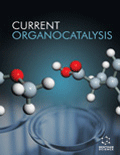
Full text loading...

Peroxidases are heme-containing oxidoreductase enzymes that have the potential to oxidise a wide range of organic and inorganic substances in the presence of hydrogen peroxide. Peroxidase has the capability to bioremediate various toxic and carcinogenic phenolic and nonphenolic compounds, various pollutants, and polychlorinated hydrocarbons. Different types of organic and inorganic chemicals change the rate of enzyme-catalysed reactions binding with enzyme or enzyme-substrate complex. Enzyme activators increase enzyme activity, while enzyme inhibitors decrease it. Enzyme inhibition involves either complete or partial prevention of the enzymes' rate of reaction. We can use enzyme inhibitors to treat a variety of pathological disorders. Nowadays, enzyme inhibitors have become extremely beneficial compounds in our daily lives. They are commonly employed to cure diseases. Heavy metals, persistent inorganic chemical constituents, act as a form of poison to the enzyme’s reactivity. High amounts of heavy metals, such as Mn2+, Zn2+, and Fe2+, are poisonous even though they are crucial for plant physiology. Peroxidase production and activation are triggered by an excess of heavy metals as a defence system to scavenge the hydrogen peroxide molecules produced by metal toxicity. The binding of some heavy metals with peroxidase alters the active site’s conformations and reduces the enzyme activity even at low concentrations. Due to the presence of metal ions changing the enzyme’s reactivity and the broad application of peroxidases, it is necessary to study peroxidase activity in the presence of heavy metals.
The aim of this work was to study the enzyme activity in the presence of different heavy metal ions, such as Sr2+, Pb2+, Bi2+, Hg2+, Sn2+, Cd2+, Zn2+, Ni2+ Mo6+, etc. It also studied the nature of inhibition of peroxidase activity from radish sources in the presence of these metal ions.
The effect of heavy metal ions on the activity of peroxidase was studied by means of a direct spectrophotometric assay that monitors at 470 nm with the decrease of tetraguaiacol formation from guaiacol in the presence of H2O2 and metal ions with time. The nature of inhibition was studied by comparing the control experiment and the experiment with the addition of two different metal ion concentrations for the formation of tetraguaiacol at 470 nm from guaiacol in the presence of hydrogen peroxidase.
From this study, we have found that the metal ions like Mo6+, La2+, and Sr2+ inhibited the peroxidase enzyme very strongly, whereas the ions like Bi2+ and Cd2+ inhibited a bit weakly. The order of the inhibitory effect on radish peroxidase activity in the presence of different heavy metal ions was Pb2+ > Sr2+ > Hg2+ > Cd2+ > Bi2+=Sn2+ > Mo6+ > Zn2+ > Ni2+. The nature of inhibition on radish peroxidase activity of the Zn2+, Ni2+, and Sr2+ ions was found to be competitive; Cd2+, Pb2+, Hg2+, and Bi2+ ions were uncompetitive; and Sn2+ and Mo6+ ions were non-competitive.
In this study, the response of the peroxidase to various heavy metal ions like divalent Cd2+, Bi2+, Hg2+, Sn2+, Pb2+, Cd2+, Zn2+, and Ni2+) and hexavalent Mo6+ was studied, and it was found that these heavy metal ions significantly inhibited the radish peroxidase activity. With a rise in the concentration of Sr2+, Pb2+, Bi2+, Hg2+, Sn2+, Cd2+, Zn2+, Ni2+ and Mo6+ ions, the radish peroxidase slowly lost its activity. These inhibitors bound to the radish peroxidase active sites and prevented the substrates from binding, and thus, they lost their tendency for binding substrates.